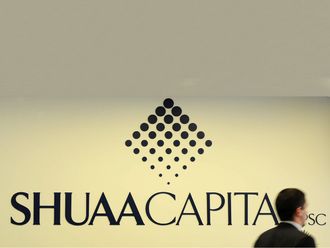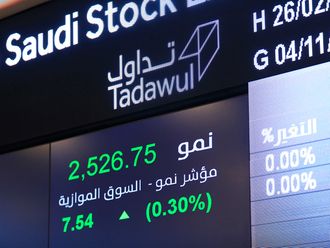Toronto, New York: The dollar’s rise to the highest level in more than a decade leaves traders looking for clues to the rally’s sustainability with a US jobs report next week looming as the next milestone.
A gauge of the currency against major peers rose for a third straight week on speculation the Federal Reserve will raise its short-term interest-rate target next month as well adjust its longer-term rate forecast, known as the dot plot. The central bank’s projected tightening of monetary policy has helped lift benchmark US yields to a 16-month high, adding to the relative allure of the greenback.
“The key issue for the US dollar in the next few weeks will be the Fed,” said Shaun Osborne, chief foreign-exchange strategist in Toronto at Bank of Nova Scotia, adding that the rate increase in December should be a done deal regardless of the nonfarm payrolls. “Messaging and any shift in the dot plot will be important.”
Osborne expects more dollar strength, betting the Fed will increase rates three times next year.
The US currency’s appreciation this month came as Treasury yields surged on bets the Donald Trump administration will increase spending and spark an increase in inflation. The combined prospect of a boost in fiscal stimulus and higher interest rates has led to dollar to erase early-year losses and put one measure of the greenback on a path to a fourth straight annual increase for the first time since the mid-1980s.
The Bloomberg Dollar Spot Index, which tracks the currency against 10 major peers, is up 3.9 per cent this month and 1.8 per cent this year. The greenback has gained 3.5 per cent in November to $1.0593 per euro and 7.3 per cent to 113.06 yen.
A gauge of whether movements have gone too far, too fast is signalling the dollar’s rally may be overdone. The 14-day relative strength index has been above the 70 threshold since November 10, flashing a signal of a possible reversal.
The 10-year note yield was little changed this week 2.36 per cent, after reaching the highest level since July 2015, according to Bloomberg Bond Trader data. The 2 per cent security due in November 2026 traded at 96 26/32. The yield on the two-year note reached 1.17 per cent, the highest since 2010.
Employment gains
Higher yields on short-term debt in particular will help make the case for the Fed to raise rates, said Michael Block, chief strategist at Rhino Trading Partners in New York, regardless of the jobs numbers the government releases.
“This makes it easier for them because markets are saying, ‘It’s OK, go ahead,’” Block said. “It would take a negative jobs number to get the market to doubt that a rate hike is happening next month.”
The US added 175,000 jobs in November, according to the median estimate in a Bloomberg survey of economists before the December 2 report, up from a gain of 161,000 in November. Employment gains have averaged 189,000 per month this year.
With the market seeing action at the Fed’s Dec. 13-14 meeting as a certainty, attention is shifting to next year, where futures show a more than 65 per cent chance of further rate hikes by June.
The forces that drove the dollar higher “remain intact,” according to a Nov. 25 note from analysts including Marc Chandler, global head of currency strategy in New York at Brown Brothers Harriman & Co. “One of the most important of these drivers has been the increase in US interest rates.”











